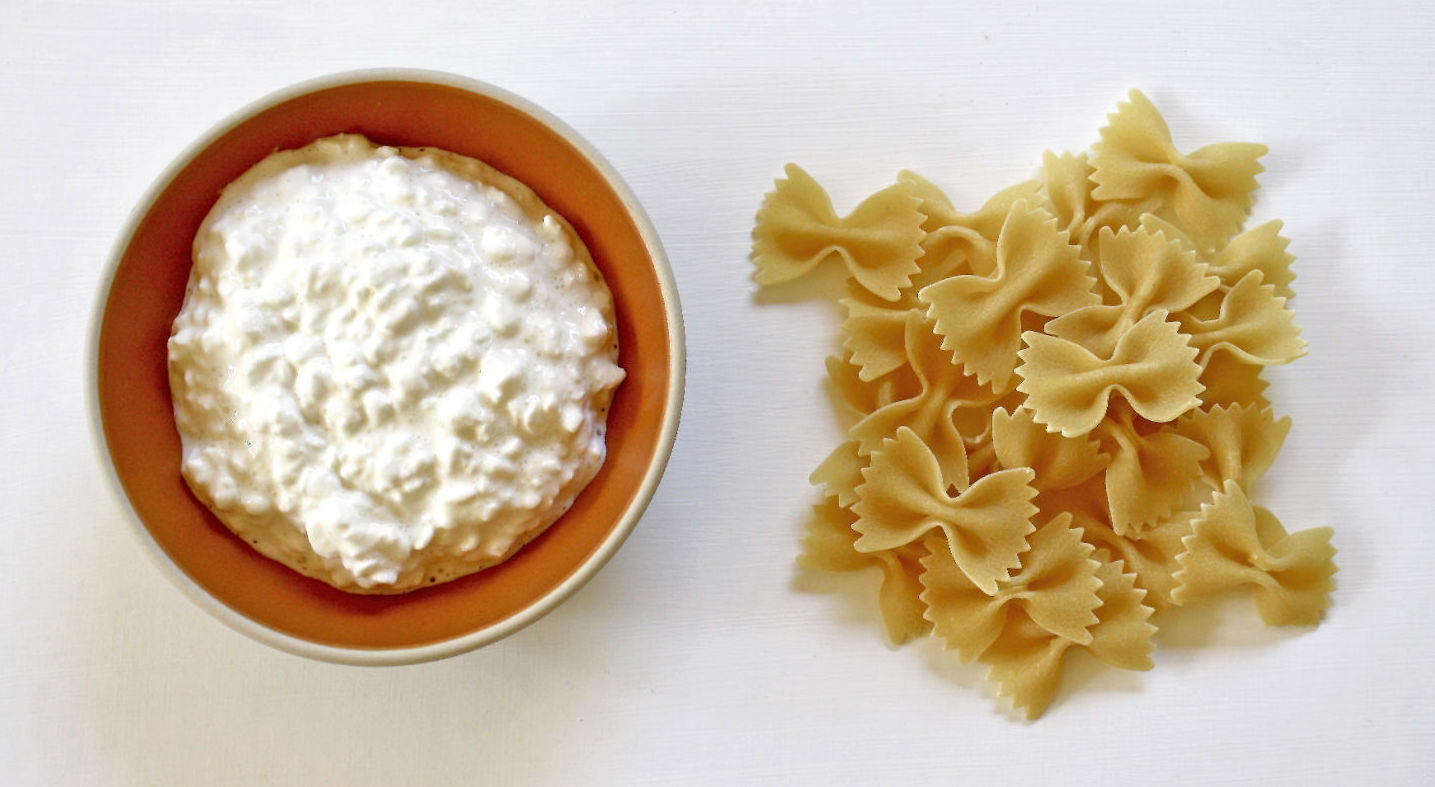The easiest Jewish comfort food of my childhood
Noodles and cottage cheese was the defining dish of my childhood. I think of it as the Eastern European version of boxed macaroni and cheese — a culinary staple of youth.
Whenever I bring up noodles and cottage cheese in conversation, it always elicits a strong reaction: Either there is an immediate enthusiastic nostalgia associated with it, or instant confusion and/or disgust. I’ve found little neutrality on the subject.
At first, I thought noodles and cottage cheese must have started out as deconstructed kugel. Sources cite that noodle kugel originated in Germany about 800 years ago. The point at which cottage cheese entered the picture remains unclear. In our home we had noodles and cottage cheese, but we never had noodle kugel.
While the origins of the dish are murky, noodles and cottage cheese is still fairly commonly eaten across Eastern Europe in and out of Jewish kitchens from Poland, to Hungary, to Russia. In Yiddish, the dish is called lokshen mit kaese, and you can track down recipes made with homemade lokshen (noodles). That said, recipes are generally scarce and arguably they are not needed, but preparations vary with the addition of fried onions, or sour cream, or butter, or copious amounts of black pepper.
What type of pasta is used? That’s up to the cook. You can make it with bowties, macaroni, penne, fettuccini or whatever you prefer. It tends to fare best when made with a pasta shape that has nooks and folds that can grip onto the cottage cheese, and with a cottage cheese that is smaller in curd.
When I was growing up, my mom’s preferred noodles were penne or fusilli, and her preferred technique was to drain the pasta, add it back to the hot pot, add cottage cheese and lastly, tons of grated Parmesan — her not-so-secret ingredient. She would stir everything together until a makeshift cream sauce formed around each noodle. She developed a reputation among my friends for making the best noodles and cottage cheese.
I grew up attending Jewish day school, but for high school I attended a public school that had only a handful of Jewish students. It was there that I uncomfortably learned that not everyone thought noodles and cottage cheese were so great. I’ve always been curious about food that can bring us shame and comfort in equal measure: I’ve often found that foods that we were mocked for eating when we were young are often the source of great pleasure as adults.
Why do so many people think noodles and cottage cheese is so strange? Is it cottage cheese’s inherent bad rap? Is it due to mixing something cold with something hot? Is it the lack of flavor? I needed to make it again, and I needed to make it for someone who had never tried it before. Conveniently, my husband did not grow up eating this dish.
I went to the store and picked up a container of small-curd 4 percent cottage cheese and a box of bowtie pasta. Once the pasta was cooked and drained, I put it back in the hot pot. The second the cottage cheese touched the bowties, a familiar smell hit me, taking me back to my parents’ kitchen. I instantly got hungry. Stirring the cottage cheese into the noodles, a sauce started to form. I seasoned it with generous amounts of salt and pepper, and a spoonful of sour cream. I filled two small bowls, and while still standing over the stove my husband and I took our first bites. For him, a fan of both pasta and cottage cheese, it was clearly disappointing.
“That’s it? I don’t know about this,” he said while thoughtfully chewing.
But he kept eating. He finished the small bowl, and then he had some more. That’s when I realized part of the appeal of noodles and cottage cheese: It grows on you. On its own, it’s not very exciting, but its cumulative effect is satisfying. For me, I took that first bite and instantly felt warmth. It tasted like home.
Ingredients:
1 (16 ounce) package pasta (penne, bowties, egg noodles, etc.)
1 (16 ounce) container small curd cottage cheese
3 to 4 tablespoons sour cream (optional)
Salt and pepper, to taste
Directions:
1. Bring a large pot of salted water to a boil, and cook the pasta according to the package instructions.
2. Once cooked, drain the pasta well and add it back to the hot pot.
3. Add the cottage cheese to the pasta and stir until all of the noodles are well coated.
4. Add sour cream, if using, and salt and pepper to taste. Stir until well combined.
5. Serve hot, and if desired garnish the dish with fried onions, parmesan cheese, and/or chopped parsley. Serves 4 to 6.
Sonya Sanford is a chef, food stylist and writer based out of Los Angeles who specializes in modern Jewish cooking. Follow her at sonyasanford.com or on Instagram @sonyamichellesanford.

 61.0°,
A Few Clouds
61.0°,
A Few Clouds 




